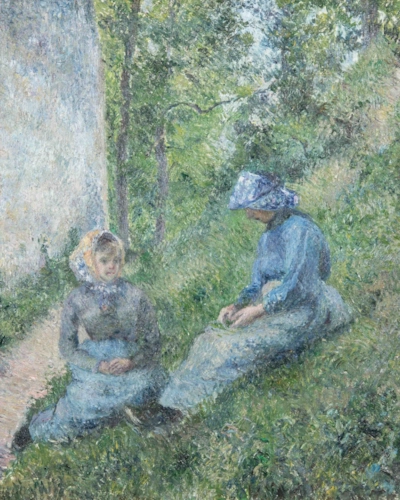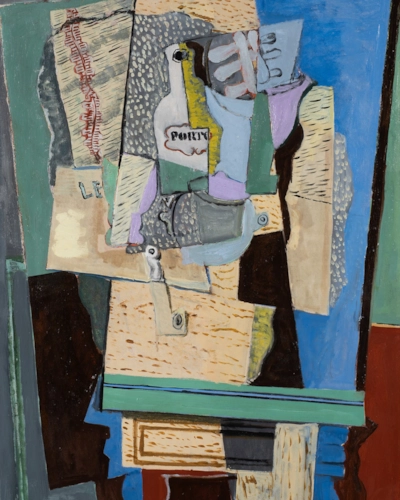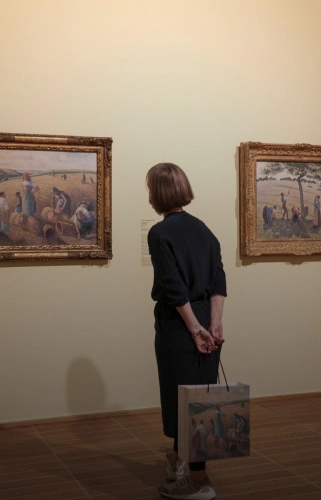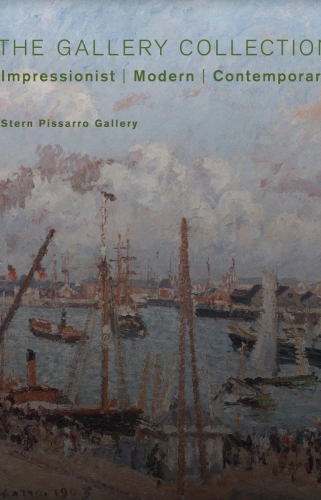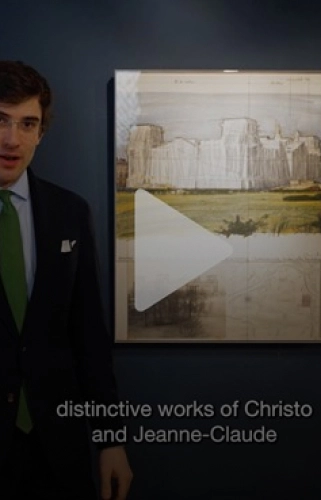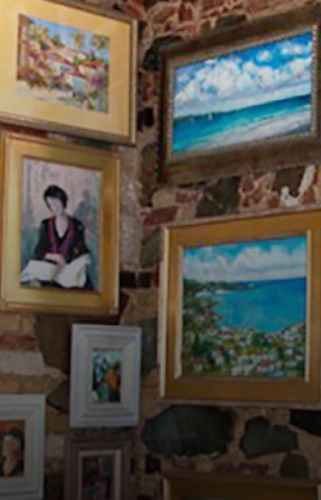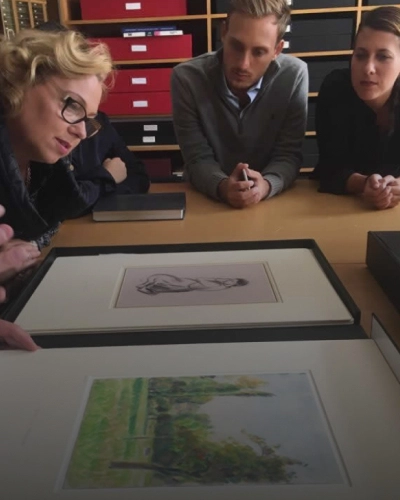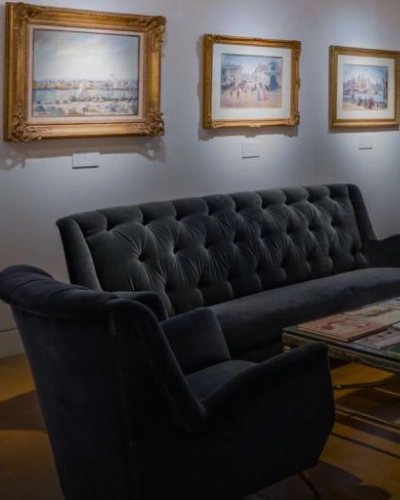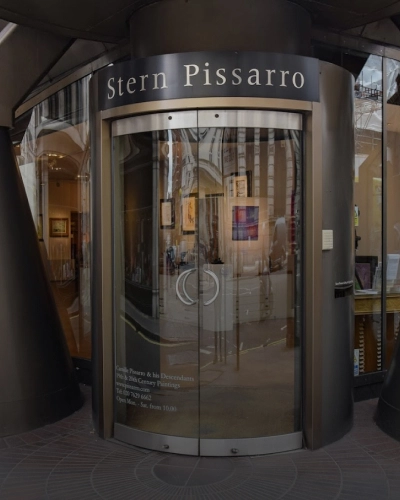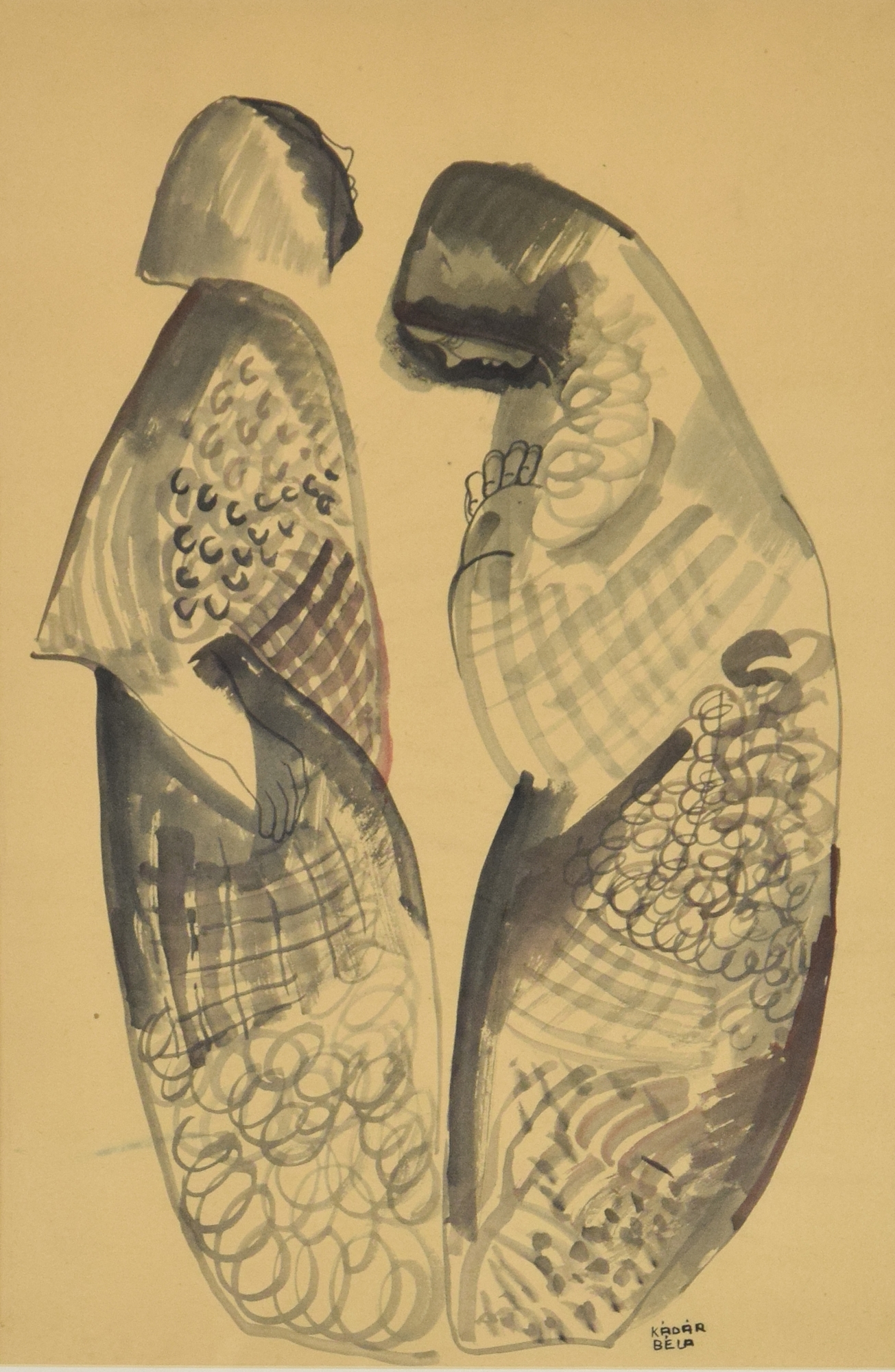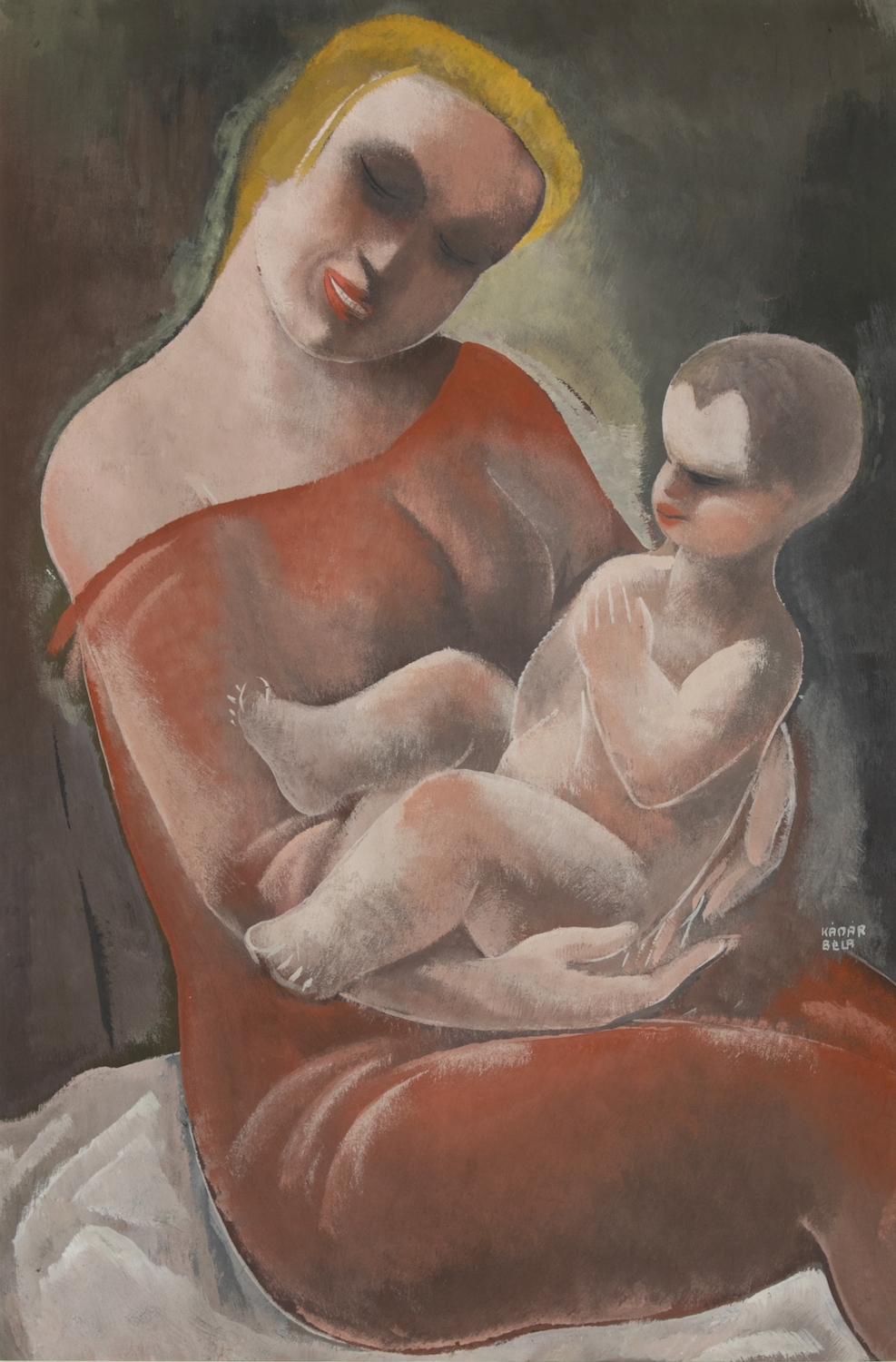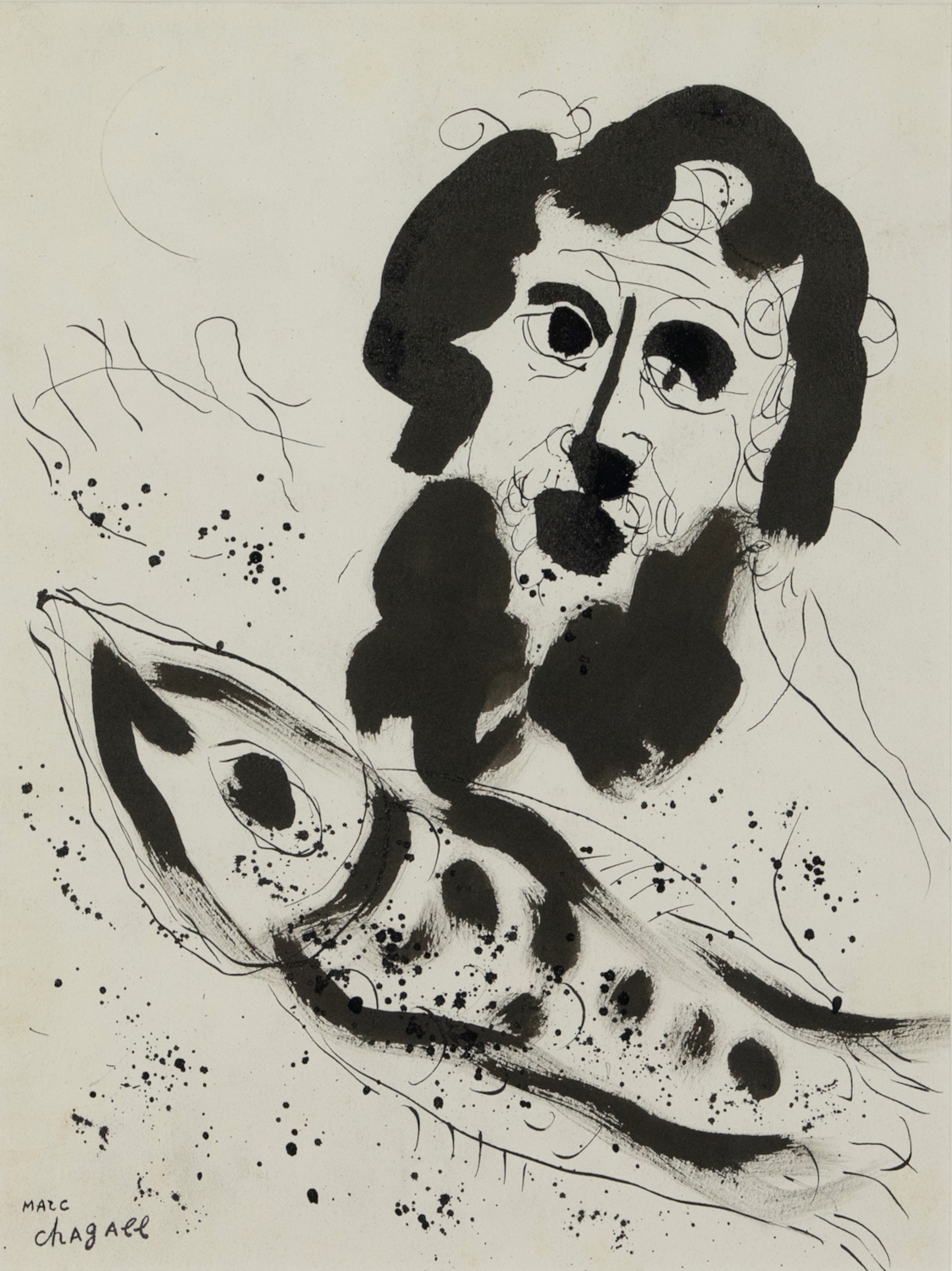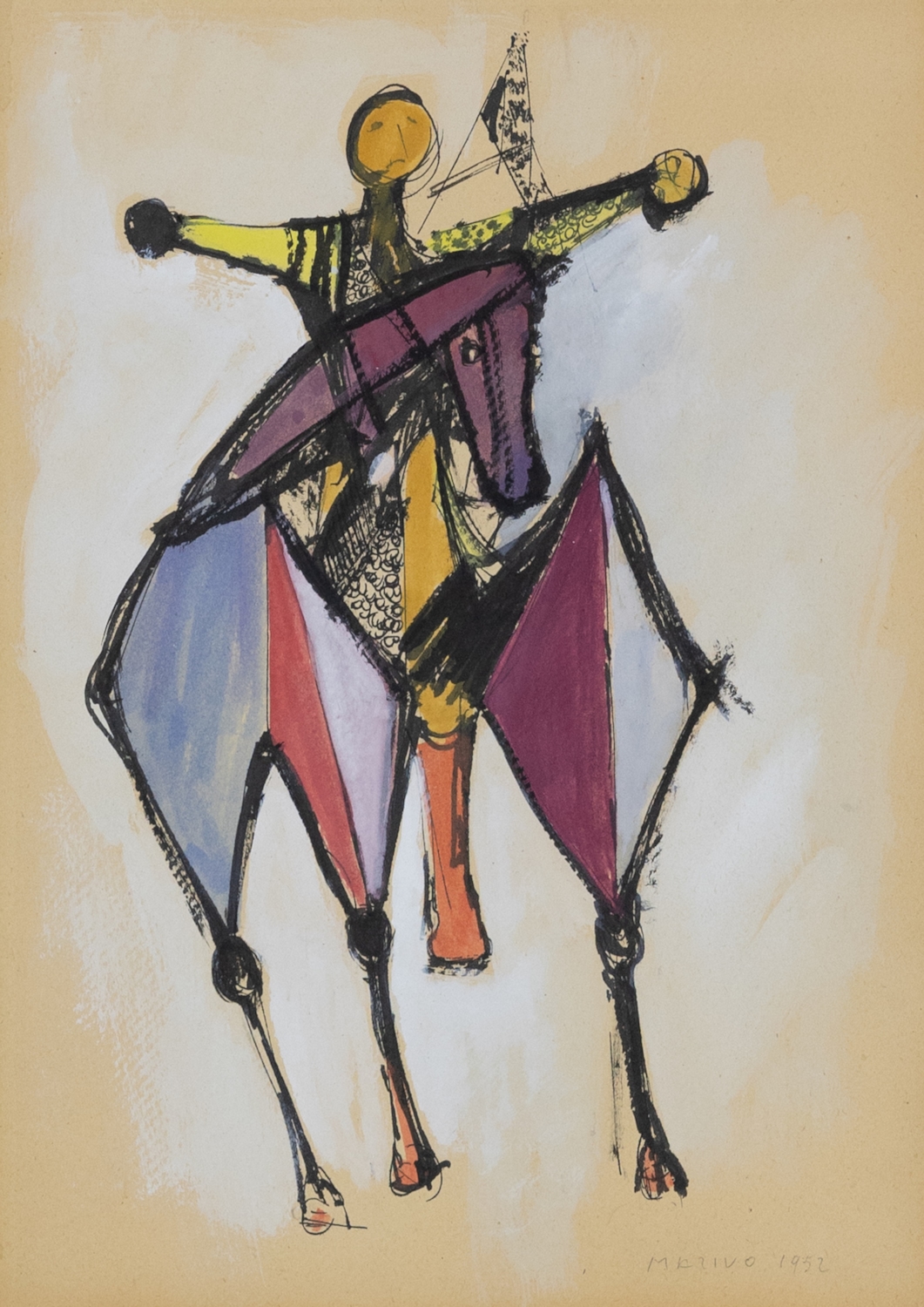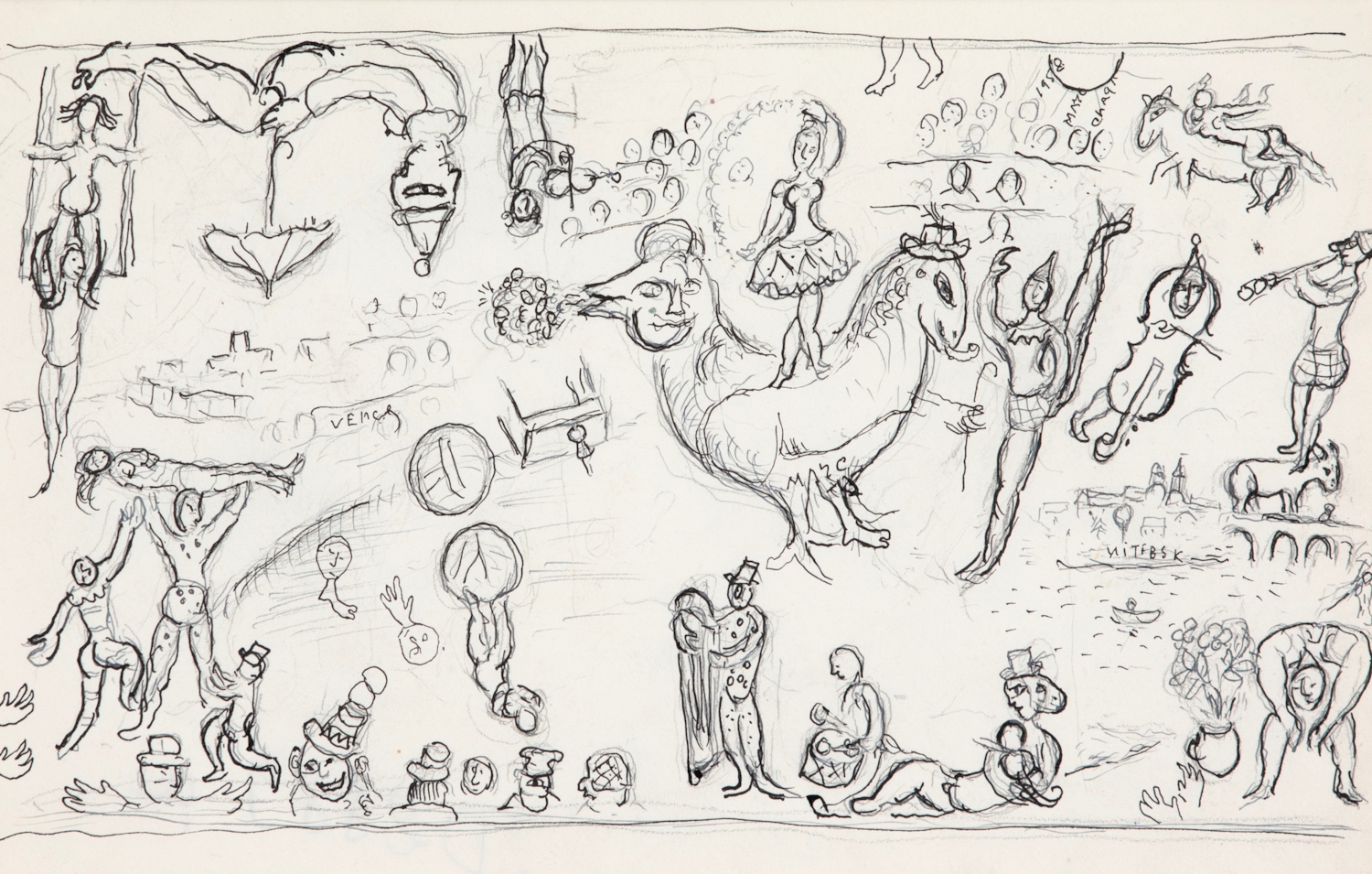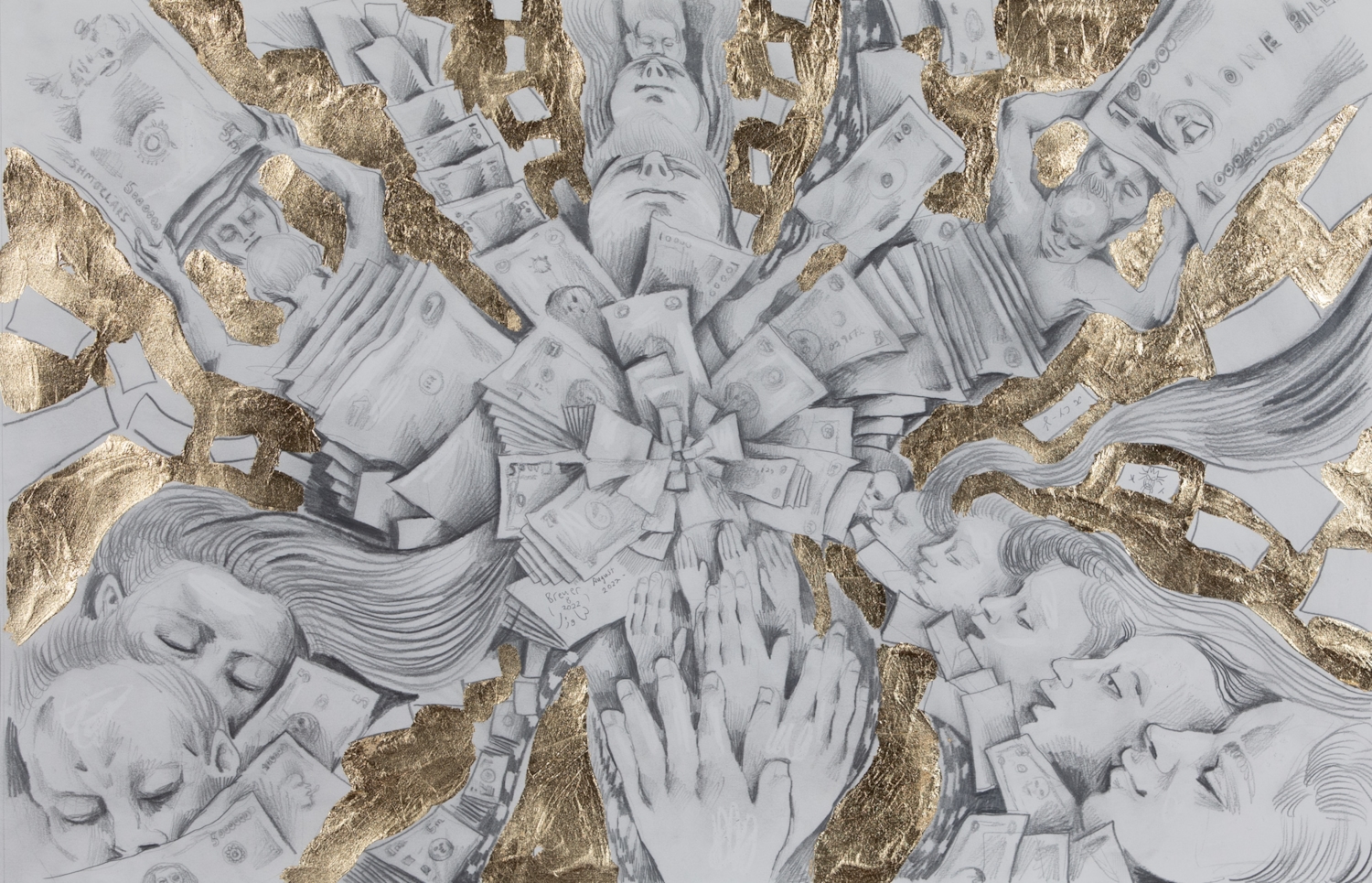Béla Kádár
1877 - 1956
Two Figures
52 x 35 cm (20 ½ x 13 ¾ inches)
Signed lower right, Kádár Béla
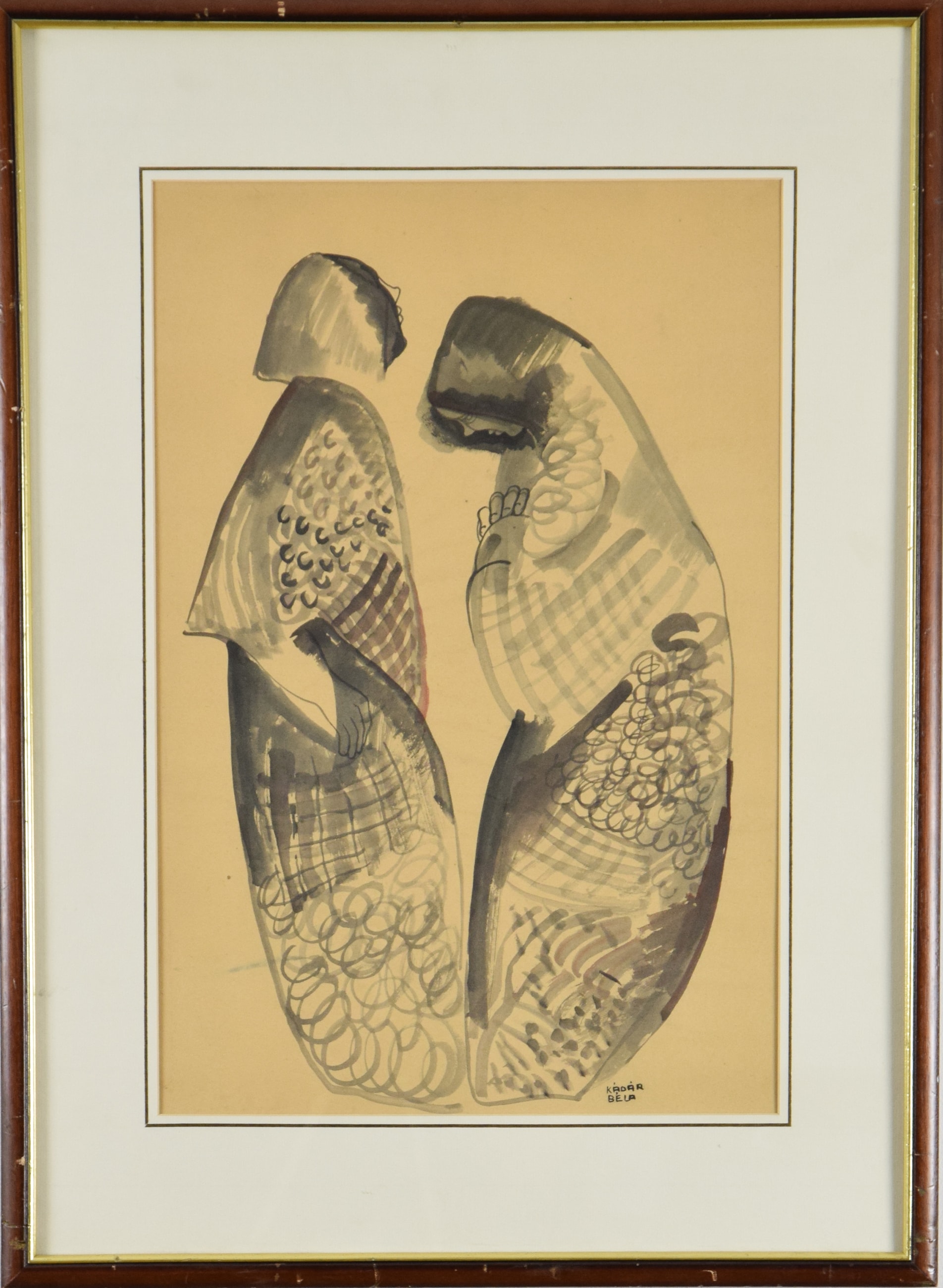
Béla Kádár
biography
Over the course of his time living in Berlin, Kádár’s style changed. His expressionistic, graphic works were gradually replaced by paintings that were more romantic and delicate in nature. Incorporating and often synthesising stylistic elements of Cubism, Futurism, Constructivism, Neo-Primitivism and German Expressionism, Kádár’s decorative and metaphysical subject matter was often based upon traditional Hungarian folklore, and his subject-matter became increasingly narrative. His paintings in this period often feature surrealistic dream-like imagery, reminiscent of compositions by Marc Chagall. Despite his variety of subjects, ranging from abstracted figures and landscapes to interiors and objects, his paintings are typically rendered in a bright, jewel-toned palette and feature a fractured approach to rendering space.
In 1923 in Berlin, Kádár was invited by Herwath Walden to exhibit at the highly influential Galerie Der Sturm, the prestigious centre of Berlin’s modern art scene. Walden was the publisher of the influential journal der Sturm, which featured the works of Franz-Marc, Paul Klee, Wassily Kandinsky, Marc Chagall and Oskar Kokoschka, and was therefore a prominent figure in the German avant-garde. During the group exhibition at Walden’s gallery alongside the Der Sturm artists, Kádár met the American collector Katherine Dreier, who included his work in the 1926 and 1928 Société Anonyme exhibitions at the Brooklyn Museum in New York organised by Dreier and the artists Man Ray and Marcel Duchamp. The Société Anonyme was instrumental in transporting the work of the European avant-garde across the Atlantic to New York.
Kadar spent a year in the Budapest ghetto (1944-45) where he managed to render almost 50 drawings about the pain and suffering he endured. However, he survived the war as one of Hungary's greatest modern artists. Today Kádár’s works are found in the collection of the Hungarian National Gallery in Budapest and have been featured in exhibitions internationally.
Béla Kádár
biography
you may also like
b. 1929
Red River Inside my Eyelids
55 x 39.8 cm (21 ⁵/₈ x 15 ⁵/₈ inches)
1901 - 1980
Cavallo e Cavaliere
41.8 x 29.6 cm (16 ¹/₂ x 11 ⁵/₈ inches)
1887 - 1985
Esquisse pour "Commedia dell'arte" (pour le foyer du théâtre de Francfort)
26.2 x 36.2 cm (10 ¹/₄ x 14 ¹/₄ inches)


